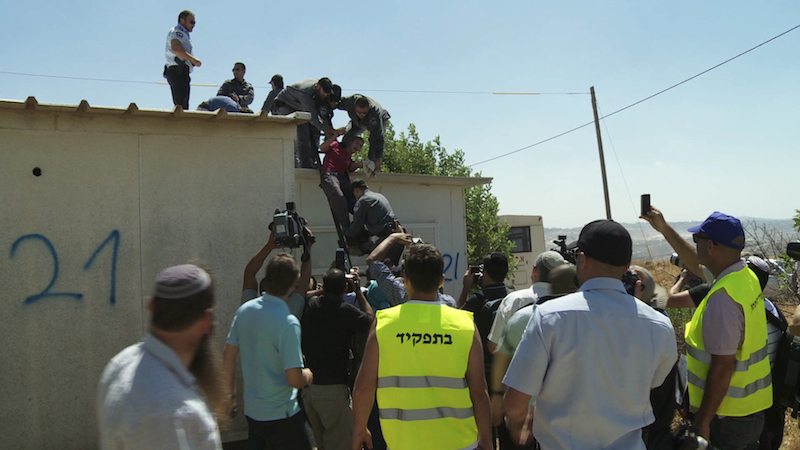
Migron Case
Migron was a settlement outpost on a hilltop about 20 minutes outside of Jerusalem. For several years until Sept. 2012, Migron was at the center of the struggle over the future of outposts in the West Bank. The Israeli courts ruled that Migron was built on private Palestinian land. Yet Migron was generally considered to be the West Bank’s largest “illegal outpost.” At its peak, Migron had a population of about 300 — about 50 families.
The settlement was evacuated in Sept. 2012 after the Israeli Supreme Court rejected a last ditch legal maneuver on behalf of the Migron settlers. The evacuation was largely peaceful. Most of the residents moved to a new settlement, also called Migron, that was hastily constructed by the Israeli government, at the bottom of the same hill on which the original Migron was located.
Although Migron was one of the most contested places in the West Bank, an outsider may have trouble grasping why people could care so much about this windswept hilltop. The houses consisted mostly of “caravans,” mobile homes that seemed to be fabricated from Styrofoam panels. A typical yard was littered with rusting appliances and old mattresses. Yet the Migron residents were fiercely devoted to their mission of settlement. Most were observant modern Orthodox Jews, deeply committed the visions of religious Zionism.
The story of Migron is the central story of Holy Land. Hagit Ofran, of Peace Now, was one of Migron’s primary opponents: she was a leader of the legal and political campaign to have the settlement evacuated. Peace Now initiated the petition against Migron in 2006. The case faced persistent legal opposition, with the Israeli government largely working in support of the settlers. Itay Harel, son of a well-known leader of the post-1967 settlement movement, founded Migron in 2001. He was a charismatic leader, who reputedly lived in a cave in the early years. He’s a therapist, who used horses in his treatment of troubled adolescents. Migron is mentioned in several places in the bible, and occupies a strategic position overlooking highway 60, the main north-south route of the West Bank. Migron developed with government support — the government erected a communications tower there, built roads, infrastructure and provided army guards. It’s estimated that the government contributed NIS 4.3
Palestinian residents of the nearby village of Burqa provided documentation to demonstrate their claims to the land on which Migron is built. The Migron settlers sought to invalidate the Palestinian claims in a succession of court cases.
As with many issues in the West Bank, the semantics of the Migron case can be confusing. An “outpost” is considered to be an unauthorized or illegal settlement, built without required government authorizations. As the Migron case shows, even outposts that did not appear to receive public authorization have received government support. There are about 100 outposts currently in the West Bank.






